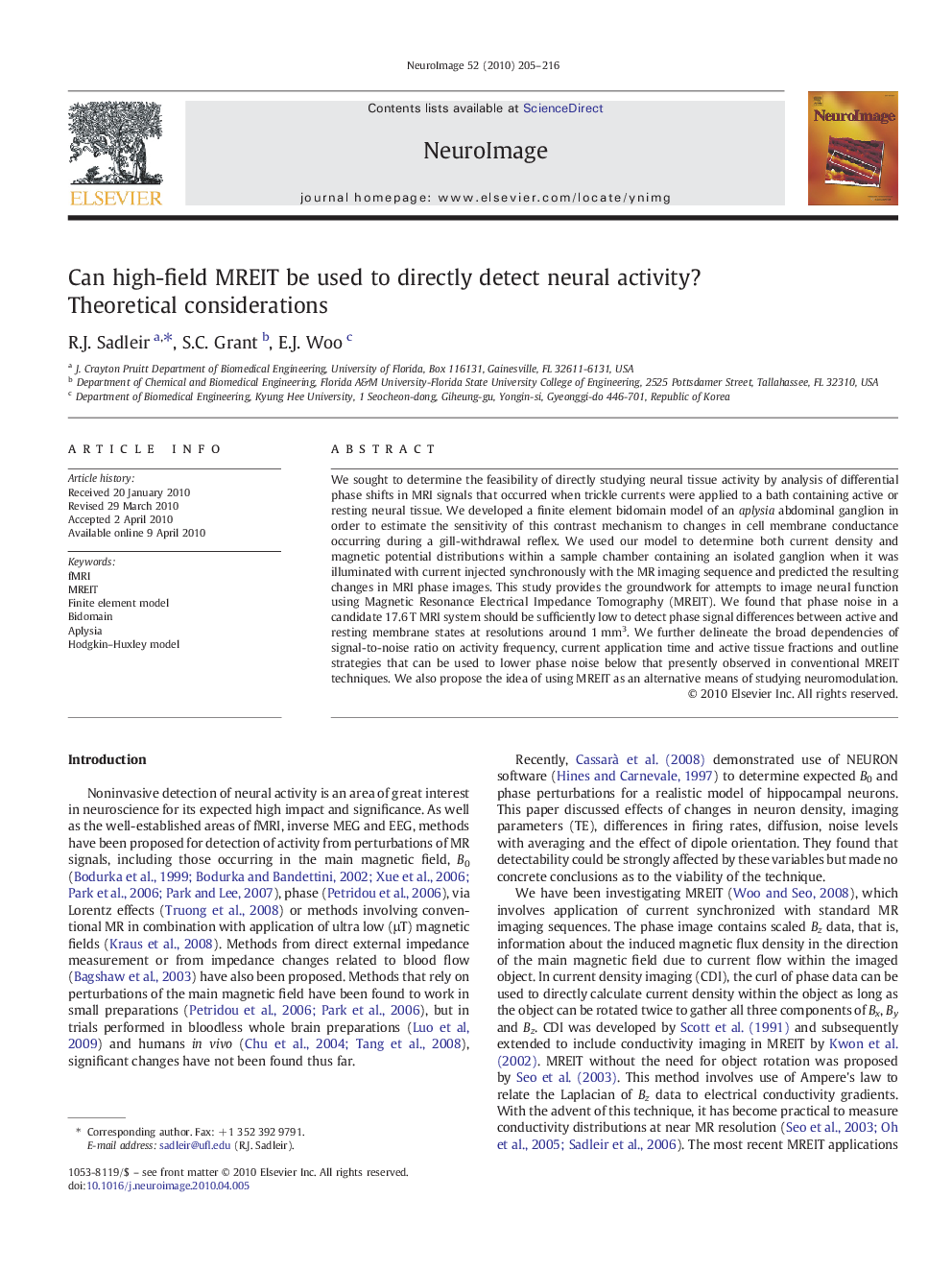| کد مقاله | کد نشریه | سال انتشار | مقاله انگلیسی | نسخه تمام متن |
|---|---|---|---|---|
| 6035465 | 1188766 | 2010 | 12 صفحه PDF | دانلود رایگان |

We sought to determine the feasibility of directly studying neural tissue activity by analysis of differential phase shifts in MRI signals that occurred when trickle currents were applied to a bath containing active or resting neural tissue. We developed a finite element bidomain model of an aplysia abdominal ganglion in order to estimate the sensitivity of this contrast mechanism to changes in cell membrane conductance occurring during a gill-withdrawal reflex. We used our model to determine both current density and magnetic potential distributions within a sample chamber containing an isolated ganglion when it was illuminated with current injected synchronously with the MR imaging sequence and predicted the resulting changes in MRI phase images. This study provides the groundwork for attempts to image neural function using Magnetic Resonance Electrical Impedance Tomography (MREIT). We found that phase noise in a candidate 17.6Â T MRI system should be sufficiently low to detect phase signal differences between active and resting membrane states at resolutions around 1Â mm3. We further delineate the broad dependencies of signal-to-noise ratio on activity frequency, current application time and active tissue fractions and outline strategies that can be used to lower phase noise below that presently observed in conventional MREIT techniques. We also propose the idea of using MREIT as an alternative means of studying neuromodulation.
Journal: NeuroImage - Volume 52, Issue 1, 1 August 2010, Pages 205-216